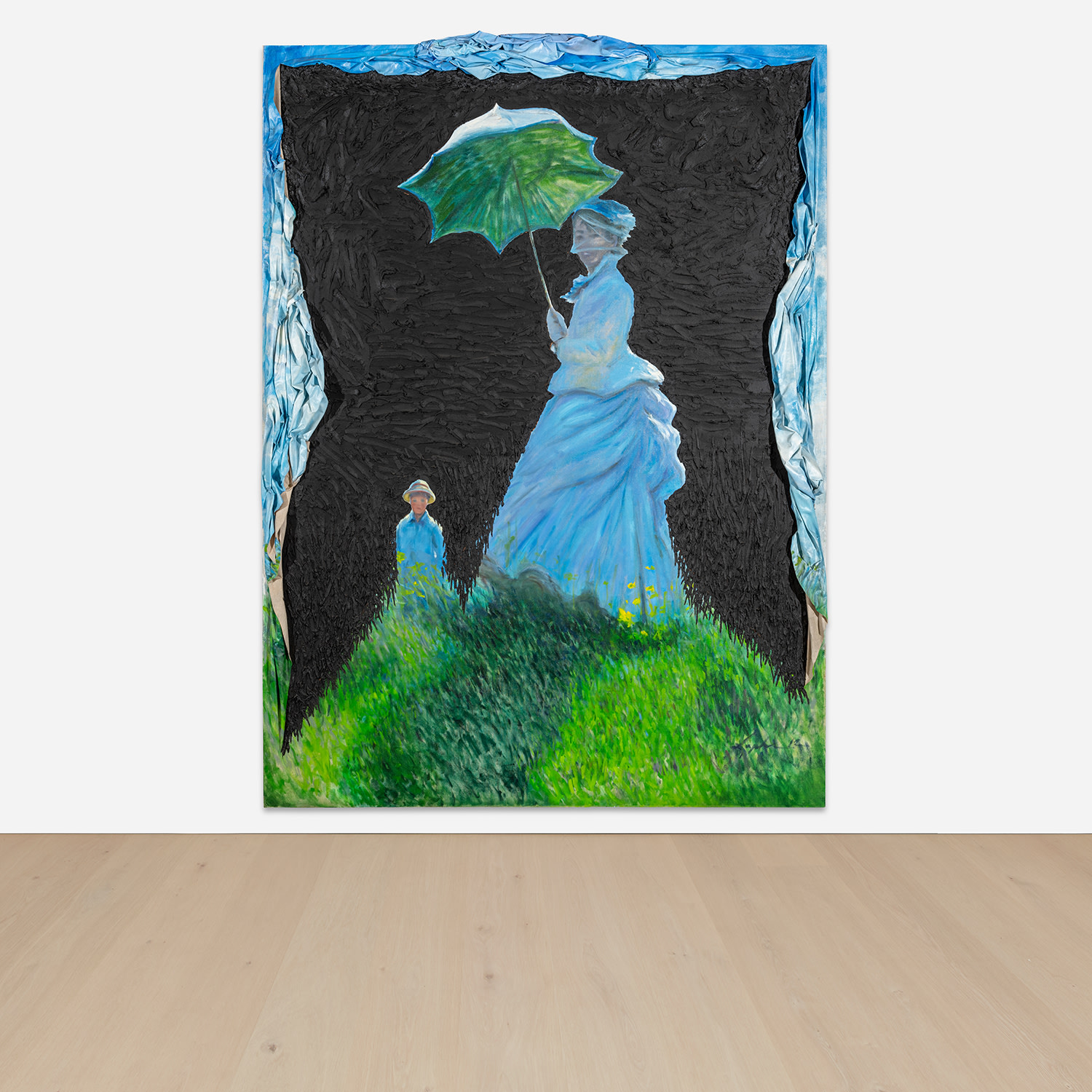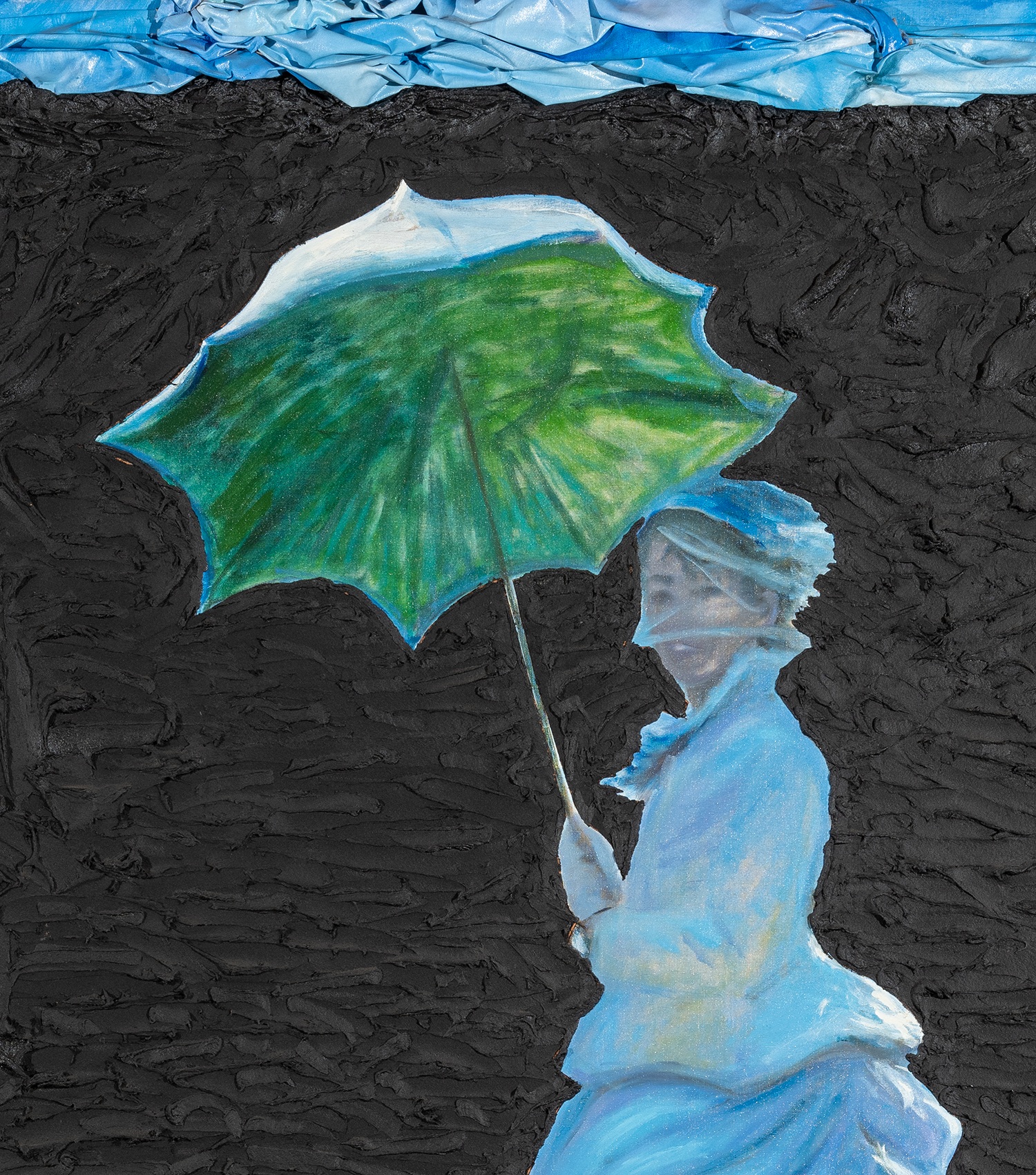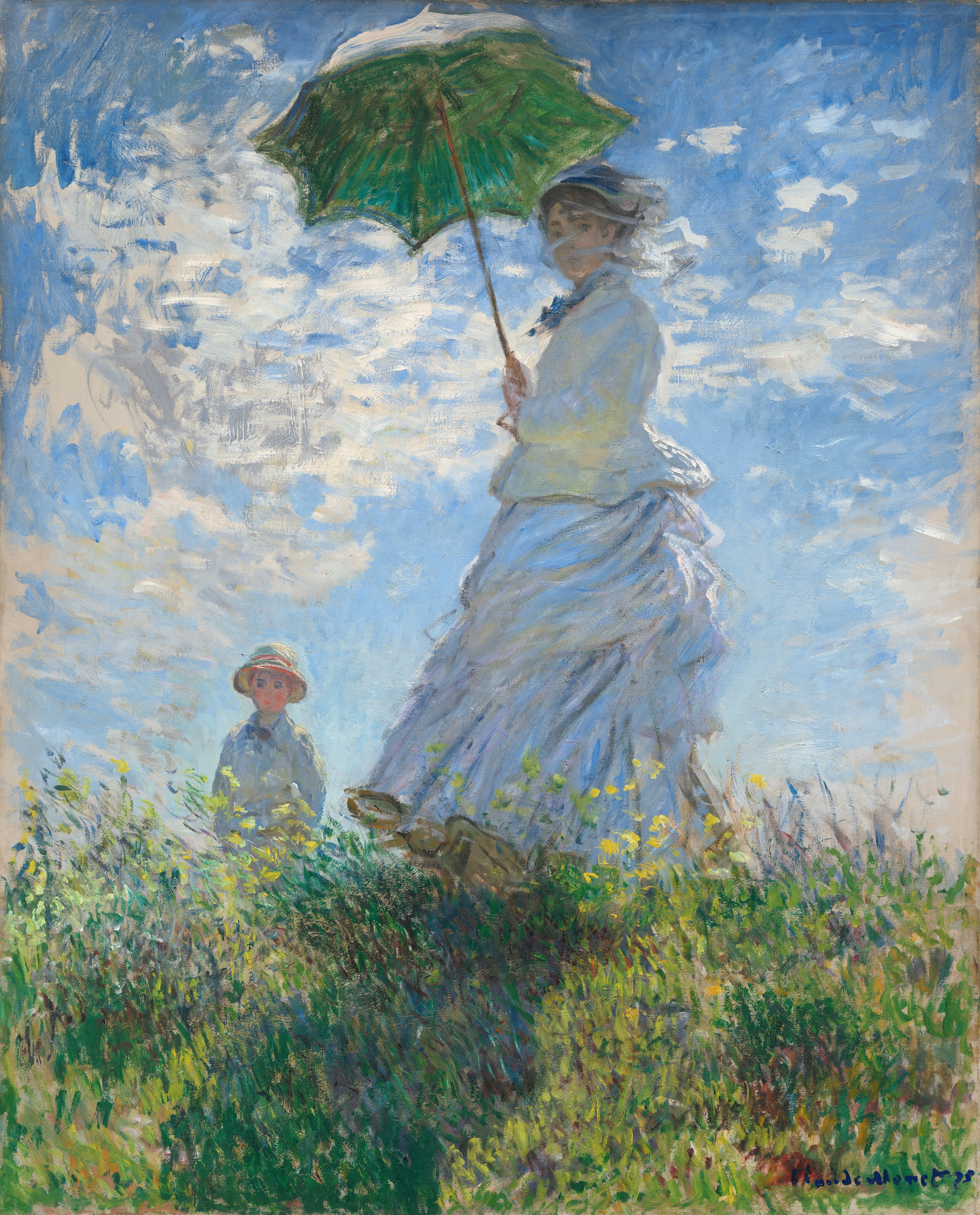


321
Titus Kaphar
Pushing Back the Light
- Estimate
- $120,000 - 180,000
Further Details
In Pushing Back the Light, 2012, Titus Kaphar references Claude Monet’s Woman with a Parasol – Madame Monet and Her Son, 1875, a luminous example from the peak of the Impressionist’s career. Kaphar’s reinterpretation retains the original’s windswept figures but strips back it’s hillside setting, quite literally pushing aside the canvas to reveal a dramatic backdrop of black tar. Kaphar translates the bucolic scene into something more opaque and ambiguous in a commentary on the shortcomings of Impressionism, most notably its absence of Black figures and its outward disinterest in racial injustices of the time. His addition of tar blackens the work and adds weight, both metaphoric and physical, while the pushed back canvas evidences the artist’s labor, making clear his process of rejection and reworking.

Claude Monet, Woman with a Parasol – Madame Monet and Her Son, 1875, National
Gallery of Art, Washington, D.C. Image: © National Gallery of Art, Washington, D.C., Collection of Mr. and Mrs. Paul Mellon, 1983.1.29
Pushing Back the Light was exhibited in the Phillips Collection’s 2020 exhibition Riffs and Relations, which highlighted Modern and Contemporary Black American artists who have engaged with, redefined, and interrogated European Modernism. The present example was exhibited alongside the works of Romare Bearden, Norman Lewis, Faith Ringgold and Hank Willis Thomas, amongst others, in addition to Monet’s original Woman with a Parasol itself. The context of the exhibition, particularly the unique opportunity to pair Pushing Back the Light with its reference, underscored Kaphar’s reverent but also critical approach to the Impressionist master.
“Kaphar’s interference in color, texture, and framing questions the idyllic projections of each scene as if to ask: What else was going on in the late nineteenth century that would tell another story?”
—Bridget R. Cooks
The curator of Riffs and Relations, Adrienne L. Childs, notes “the erupting tar nearly engulfs the scene… suggesting a clash of cultures that are nonetheless organically intertwined.”i Kaphar’s work draws attention to the shortcomings of a European-focused art historical canon while also tacitly acknowledging the irrefutable lineage from the early-Modern art historical movement to the present day. Kaphar states, “I take historical paintings and address them in modernist ways [sic],” noting the historical precedence of re-working existing images, while also reflecting on the simultaneous socio-political events globally concurrent to Impressionism in the 1880s.ii On the present example Kaphar explains, “With Pushing Back the Light I wanted to do something that felt as though it was a gesture of peeling back this idea of “Impressionism as pretty picture” to reveal something else underneath, to reveal some of the kind of guttural nature of what was happening across the pond and other places as well.”iii
i Riffs and Relations: African American Artists and the European Modernist Tradition, exh. cat., The Phillips Collection, Washington, D.C., 2020, p. 14
ii Titus Kaphar in Riffs and Relations, p. 17
iii Ibid.
Full-Cataloguing
Titus Kaphar
Titus Kaphar’s work questions the nature of history and its representations in the past and today. By altering the materiality of his paintings, sculptures, and installations, Kaphar subverts conventional understandings of historical representations and exposes the uncomfortable and troubling realities of the racism in America’s past. Kaphar’s examinations of historical representations and the omissions of such representations encourage viewers to question their own relationships to history and understandings of the past. He strives to dislodge history from the past and to promote its relevance in the world today.
Kaphar’s work has received considerable acclaim, and his paintings have graced two covers of Time magazine. He is the recipient of a 2018 MacArthur Fellowship and his work is represented in such institutions as the Brooklyn Museum, the Museum of Modern Art, New York, the Yale University Art Gallery, New Haven, and the Perez Art Museum Miami. He lives and works in New Haven, Connecticut.